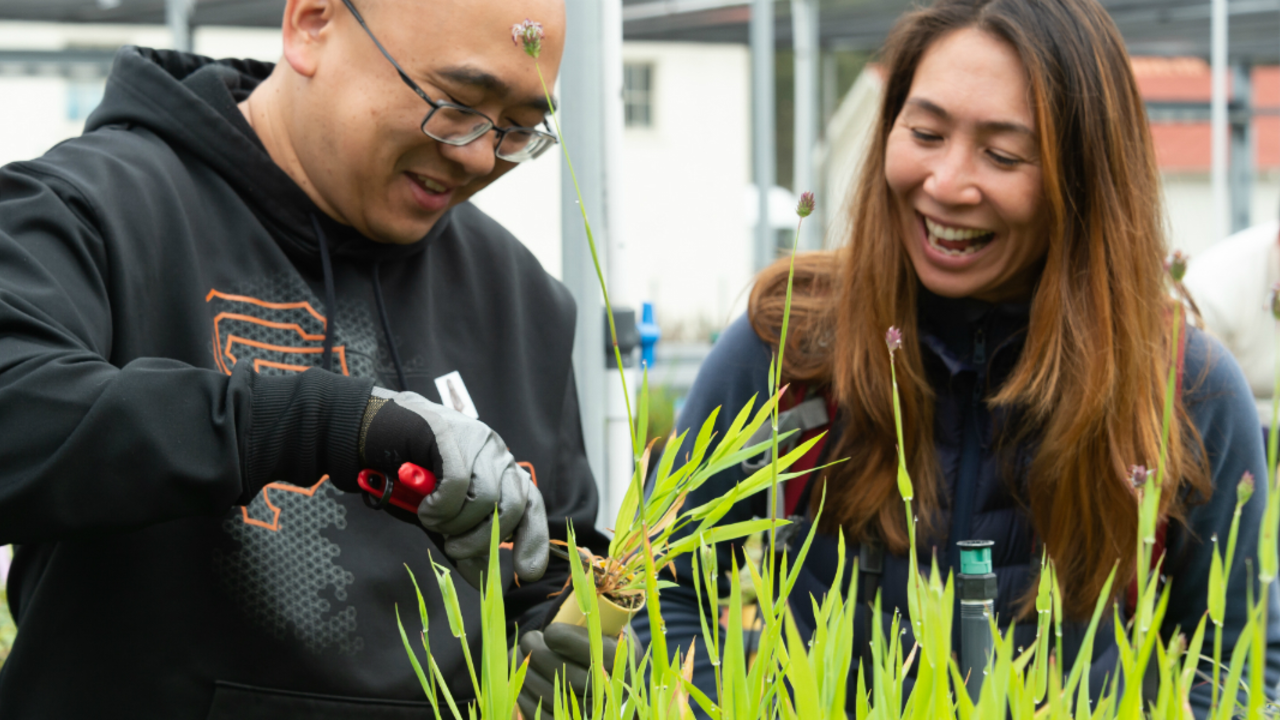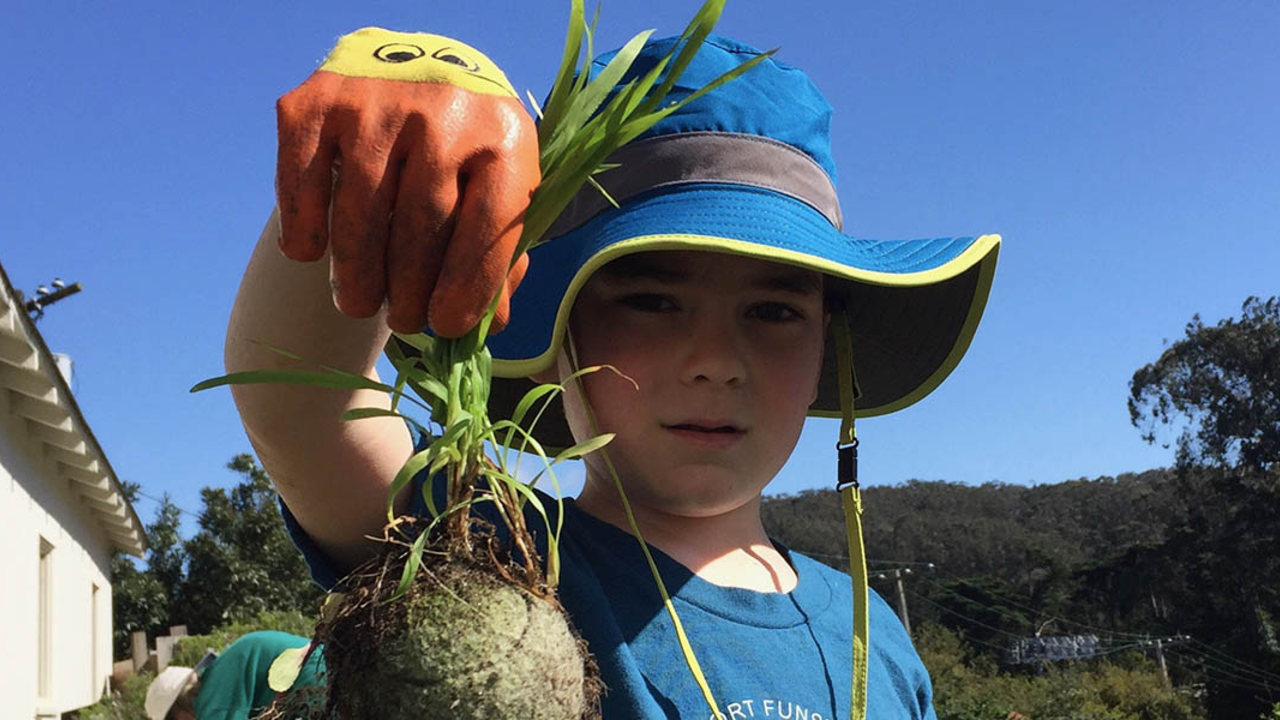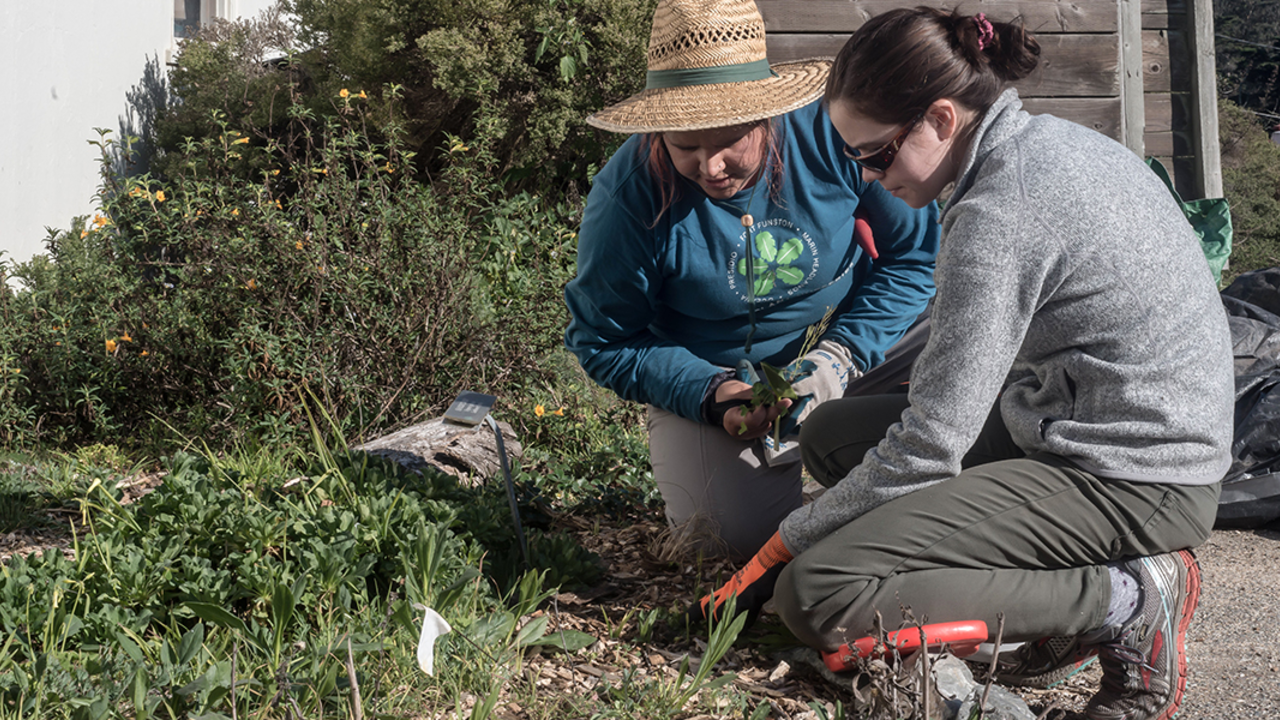The great ‘treasure hunt’: Scouting seeds in the GGNRA
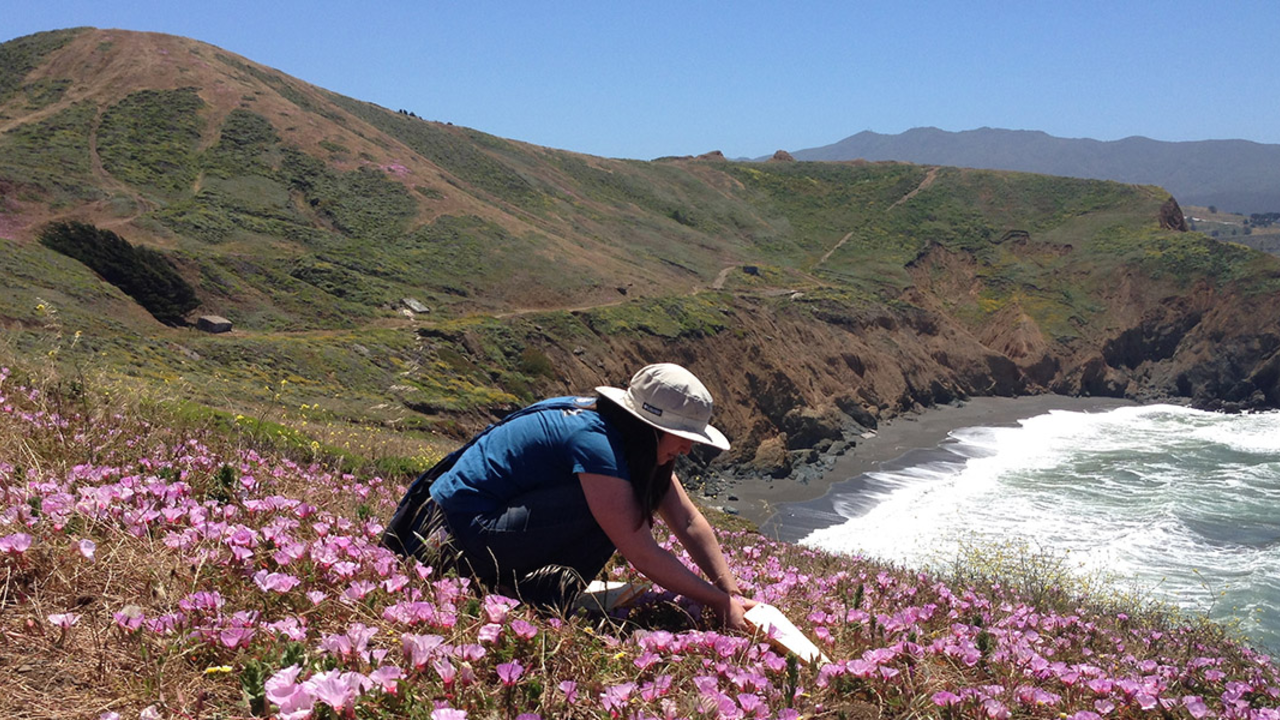
Parks Conservancy
For Martine Glaros, it’s “like hiking and going on a treasure hunt at the same time.” Desmond Murray called it “needle in a haystack stuff.”
Imagine finding a bloom in the park and going back weeks later when it’s no longer flowering, grasses and shrubs growing up around it, and you’re crawling around trying to find one stalk in a sea of green.
That’s why Martine and Desmond, who both work in the Parks Conservancy’s native plant nurseries, use a combination of GIS maps, flagging, and community science to track down plants for seed collection in the Golden Gate National Recreation Area (GGNRA). Seed collection is critical to maintaining the populations of rare and endangered native plant species in our parks, and our collectors wield their magnifying glasses and their expertise in finding plants from Mori Point to the Marin Headlands.
Seed collection helps preserve the ecology of the GGNRA. Project managers and partner agencies from across the parks request plants for restoration, and we fill those orders via one of our native plant nurseries. The best way to grow the new plants is by using seeds collected from the flora already in the parks.
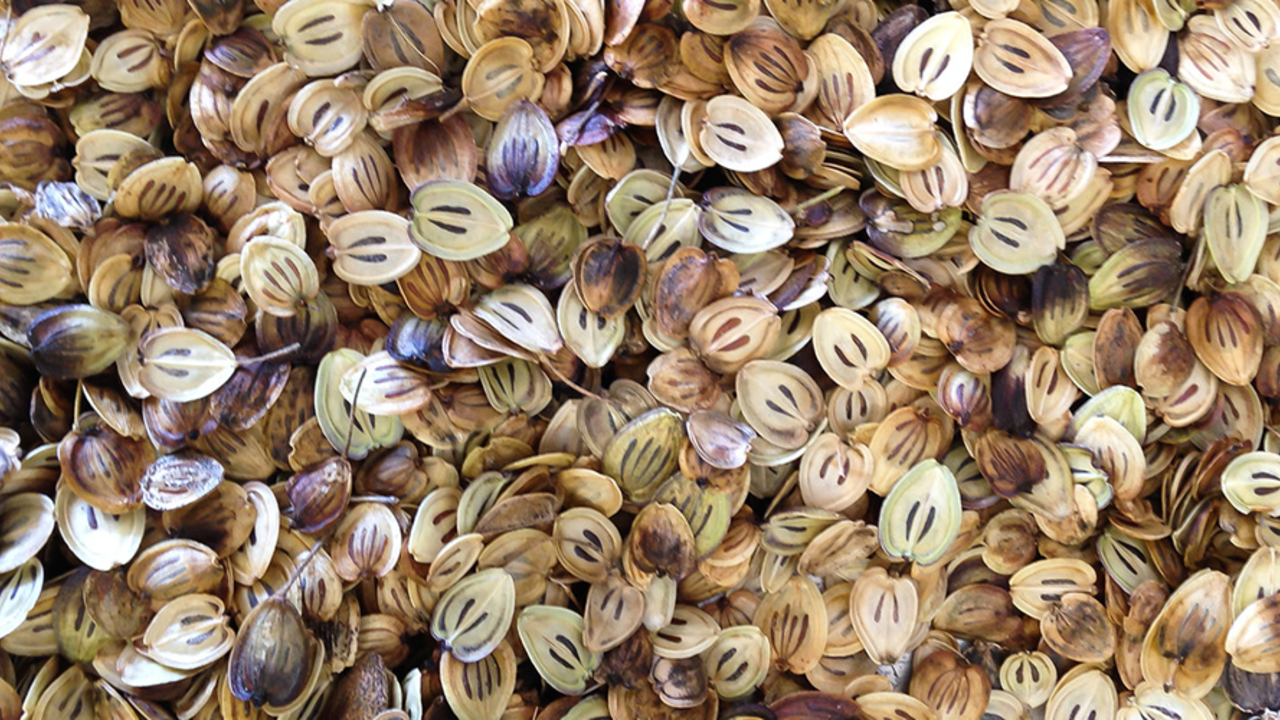
You might see colorful flags near the trails of the GGNRA, which can mean a variety of things from marking a pipe for a park construction project to locating a plant for seed collection. When Martine and Desmond are scouting a species, they’ll research it, then locate it using our own ArcGIS maps or public sightings logged in iNaturalist and Calflora. Or sometimes we'll discover new plant populations and add them.
We try to catch sight of the plant while it’s blooming, flag it, map it, and return later to collect seeds. We collect a maximum of 5% from an area’s plant population so seeds aren't over-harvested and we're supporting ecologically healthy plant populations, while also collecting enough seed to capture a diverse genetic seed pool.
The seed-collector's toolkit
In his “hollow leg” hip pack, Desmond carries:
-Envelopes
-Ziploc bags
-Magnifying glass
-Pruning shears
-Maps
-Water bottle
-Snacks
-First aid kit
-Tick key
“It keeps you extremely in touch with the natural rhythms of the ecology,” said Martine, Seed Collector and Nursery Assistant at the Marin Headlands Native Plant Nursery. “You can go to a certain hillside and see one palette of plants and then come back a month later and it's a completely different palette because some have died back and some have come out. So you can just kind of feel in touch with the earth."
The seed collection itself can be tricky depending on the plant. Martine and Desmond might place a mesh bag on a flower after it’s been pollinated, and the seed will develop in the bag and drop into it. Or they might collect from a buckeye tree with pole pruners. This leads to a wonderful array of seeds stored in our nurseries, from tiny annuals to big oaks, taking many forms like prisms or hexagons.
Want to see some of those seeds yourself? The best way is by volunteering with the native plant nurseries. We need your help, from pruning, to pot-washing, to seed-cleaning, and maybe even seed scouting if you’re lucky enough to join this treasure-hunting group.
“It’s always helpful to have more eyes,” said Desmond, Seed Ecologist at our Presidio Native Plant Nursery. “I feel like our brains get so used to seeing the same patterns, you’re like ‘no, there’s nothing there’ but other people will see it. We all see slightly different things out there.”
We encourage parkgoers to always stay on-trail and never collect seeds in the parks without being a part of an authorized seed collection outing—it’s illegal to collect plant material from a national park without a permit. Even removing a small amount of seed can be harmful to the overall population. And please don’t remove flags you see, because then we might not be able to find the plants again!

